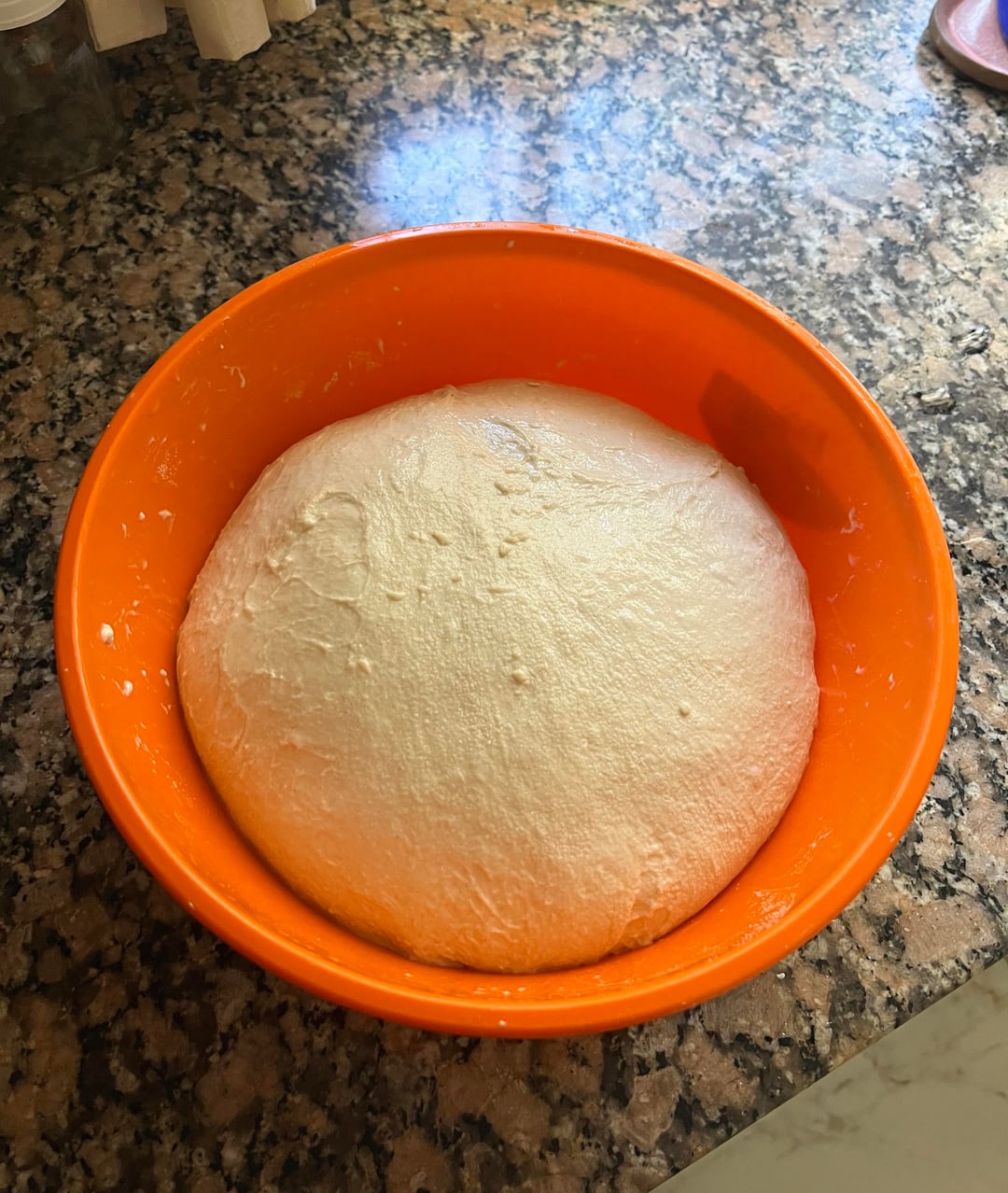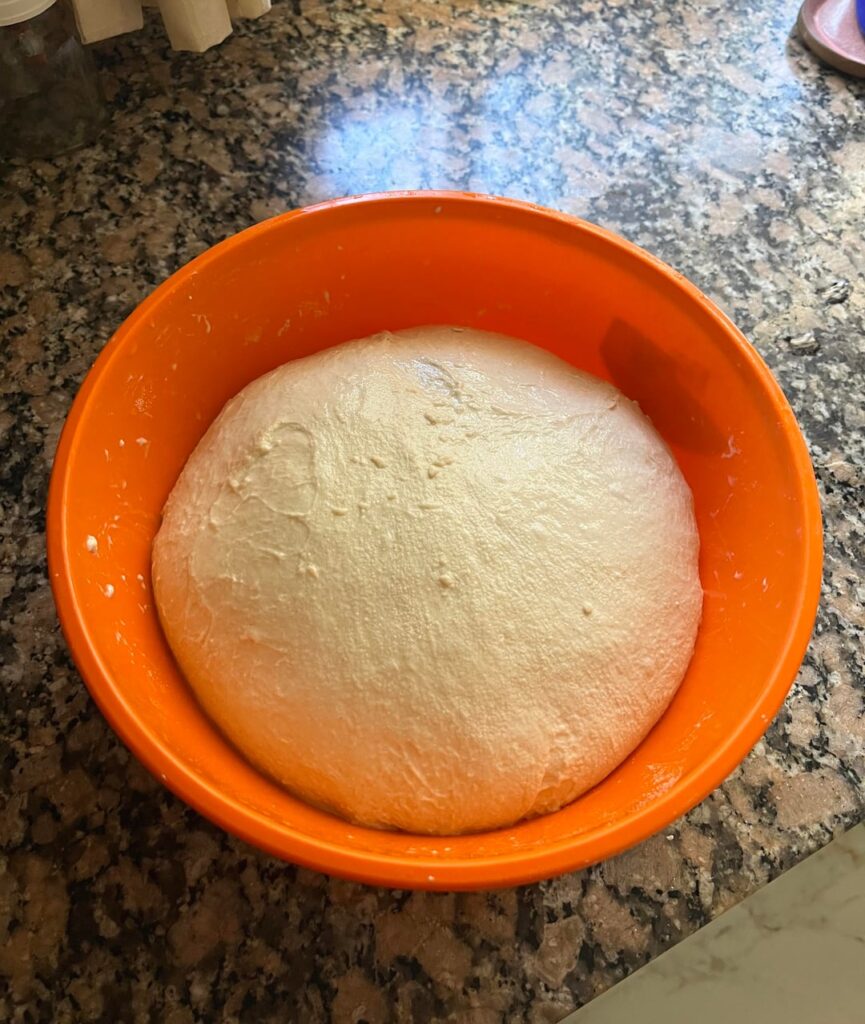

I was making a focaccia dough when it suddenly turned liquid for no apparent reason after I put it on the counter and folded it a few times.
these are the list of ingredients im using:
1000 gr Bread Flour
800 gr Water
20 gr Salt
200 gr Sourdough starter
Can anyone explain what could have happened or give me any tips/tricks so that this never happens to me again?
EDIT: I mixed all the ingredients and wait 1 hour for autolysis, then i started 4 cycles of about 3/4 foldings and 1 hour fermentation between foldings. The next thing i was trying to do was separating the dough into two little ones to do a overnight cold fermentation (almost the final step before cooking it), that's when it break apart and start getting liquid.
by Nicolas696


15 Comments
**Hello Nicolas696,**
Thank you for posting. **[Here is the posting prompt](https://imgur.com/a/De6AKiQ)** if you need to read it again. **[RULES LINK](https://www.reddit.com/r/Sourdough/wiki/sourdoughrules/)** :-). This comment appears on **all posts**.
**[Modmail us :-)](https://www.reddit.com/message/compose?to=/r/Sourdough)** with questions.
# **[READING CRUMB GUIDE ](https://www.reddit.com/r/Sourdough/wiki/reading_crumb/)**
# [Wiki index](https://www.reddit.com/r/Sourdough/wiki/index/), &
# [FAQ Beginner starter guide](https://www.reddit.com/r/Sourdough/s/gnqFg7osBO)
*I am a bot, and this action was performed automatically. Please [contact the moderators of this subreddit](/message/compose/?to=/r/Sourdough) if you have any questions or concerns.*
Waaaay too much water
Assuming you are doing a 1:1 flour to water for your starter, that is an 82% hydration dough, which is often hard to work with.
Also, from your 1st picture, it looks like you dough is being stretched to the point of tearing .
Over kneading can cause that to happen, Rye is especially susceptible to over kneading. Letting the dough get over heated, again usually caused by aggressive mixing increasing temp through friction. Doesn’t sound like this is the cause in your case. But that is usually the cause, and no amount of extra flour will fix it.
Can you share your process/method?
People saying too much water but for foccacia I use a 100% hydration dough so I really don’t think it’s that (plus you can see the dough was well formed in photo 1)
This is an 83% hydration loaf. I dont think he used too much water, possibly more of an issue with developing strength in the gluten.
https://preview.redd.it/w6vlylc7cv1g1.jpeg?width=3000&format=pjpg&auto=webp&s=68d79c104bb5a1232d34aba407a44244ba952653
this is deffo not a hydration issue… 80%, even 82% should not do this with any flour. Besides in the 1st photo the dough is nicely domed and puffy. I don’t know what happened here but i really want to. maybe some sort of reaction, or too acidic starter.. just shooting shit at this point
When in the process did it turn liquid? Give us your steps prior to that happening.
Looks like your gluten has broken down. Possibly from overactive enzyme activity. I don’t know a lot about it but shortening your proofing time should help. As for this loaf the best you can do is pour it in a pan and bake it.
That’s in the range of 80% hydration. What is the flour:water ratio of your starter? It looks like your flour did not have adequate protein content for the hydration level.
The gluten structure present in your dough was not able to handle the degree of hydration. This can be due to two separate factors: too much water, or not enough gluten structure. The latter problem can be further separated into ‘not formed’ or ‘degraded’.
Given your recipe and photo, my guess is twofold: too much water and degradation of the gluten. Here’s the key you have to understand: autolysis gives time for enzymes to work, *but*, the main enzyme you want working is amylase, which breaks down starch into fermentable sugars. Dough also contains protease, which destroys gluten and gliadin, and given enough time, will degrade your gluten network.
Protease requires water to operate, so overhydration screws up your dough two ways.
Cut your water to 700, cut half an hour off your autolyze, and reduce bulk ferment to between 3 and 4 hours – time your stretch and folds to fit within that. (I recommend actually timing your S+F to end when there are 90 minutes left in bulk ferment; that way the final gluten development is done by the microbubbles of CO2 that the yeast are producing, which contributes to a nice airy crumb).
If I wasn’t clear, feel free to ask questions – this is a tricky issue with sourdough and you have to develop a feel for it.
Why did you knead it after the first pic? It was perfect!
I would say acidic starter. try feeding higher ratios like 1:10:10 or 1:15:15
If over fermenting was the problem, the dough will be quite sour. My bet is that was your problem. That does mean your starter is quite fast and/or very acidic.
You don’t knead focaccia. A couple stretch and folds spaced out 30 mins and that’s it. It’s supposed to be a simple bread for that reason exactly.